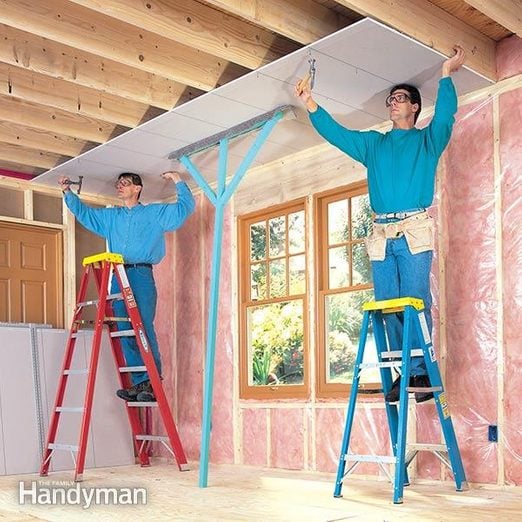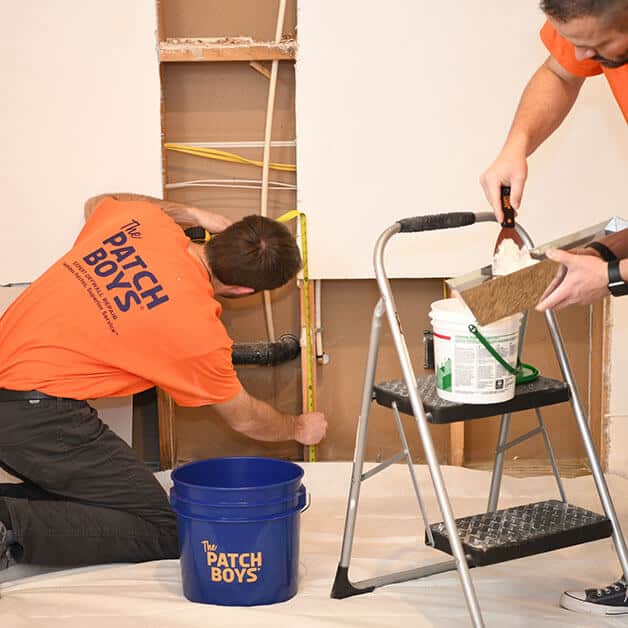Cutting-edge Strategies to Drywall Installation in Edmonton
Wiki Article
The Ultimate Step-by-Step Overview to Drywall Installment: From Prep to Paint
Drywall installation is a vital action in any kind of construction or renovation project, and it needs cautious interest to information and accurate implementation. In this comprehensive guide, we will certainly stroll you through each step of the process, from the first preparation to the final painting. From gathering the essential devices and products to gauging and cutting the drywall panels, we will give you with succinct and clear directions to guarantee an effective setup. That's not all-- we will certainly also cover the critical steps of securing the panels, finishing the surfaces, and achieving a remarkable paint work. Whether you're an experienced Do it yourself enthusiast or a novice property owner, this overview is your go-to resource for achieving specialist results.
Gather Necessary Equipment and Materials
To start the drywall installation process, it is necessary to collect all the needed devices and materials in a professional manner. Having the right tools and products not only guarantees a effective and smooth installation however likewise adds to the general top quality and toughness of the ended up project.First and foremost, you will certainly need a measuring tape to accurately determine the dimensions of the ceilings and wall surfaces. This will certainly enable you to reduce the drywall sheets to the proper dimension, decreasing waste. An energy blade with sharp blades is vital for clean and exact cuts (drywall Edmonton). In addition, a T-square can help you achieve straight and square cuts.
Following, you will need a cordless drill or screw gun to secure the drywall sheets to the studs. See to it to have an adequate number of drywall screws on hand. These screws must be long sufficient to permeate the drywall and firmly secure it to the studs.
Various other vital devices include a drywall lift or a number of aiding hands to assist with positioning and holding the drywall sheets in position. A drywall T-square can be helpful for marking reducing lines, while a rasp or sanding block will certainly allow you to smooth any kind of harsh sides.
Last but not least, gather all the essential safety and security tools, such as safety glasses, handwear covers, and a dirt mask, to shield on your own throughout the installation procedure.
Prepare the Workplace
Prior to starting the drywall installation process, it is essential to appropriately prepare the job location to make certain a smooth and reliable installation. This step is crucial as it establishes the structure for the whole project, allowing the installment to continue perfectly.To begin, it is necessary to clear the work area of any furnishings, decors, or various other things that may block the setup procedure. This includes getting rid of wall danglings, covering furnishings, and securing the floorings with decline towels or plastic sheets. Additionally, make certain that the area is well-ventilated by opening up windows or utilizing fans to stop the buildup of dust and fumes.
Next, examine the wall surfaces and ceilings for any type of existing damage or abnormalities. Deal with any type of concerns such as splits, openings, or irregular surfaces before waging the setup. This might entail patching up openings, fining sand down harsh locations, or using a skim coat to also out the surface area.
Finally, procedure and mark the design of the drywall sheets on the walls and ceilings. This will work as an overview during the installment process and assistance guarantee accurate positioning of the panels (drywall repair). Take right into consideration any electrical outlets, switches, or other fixtures that may need unique attention
Step and Cut the Drywall Panels
Accurate dimensions and specific cuts are essential when dealing with drywall panels throughout the setup procedure. Before reducing the drywall, it is crucial to gauge the dimensions of the area where the panels will be set up. Make use of a measuring tape to identify the elevation and size of each section, and make sure to represent any electrical outlets or fixtures that may require custom-made cuts.When the measurements are taken, move them onto the drywall panels utilizing a pencil or marking tool. Ascertain the dimensions to make sure precision before continuing with the reducing process. It is advised to use a T-square or straight side to create straight lines for cutting.

Bear in mind to put on safety goggles and dirt masks when reducing drywall to protect on your own from debris (drywall Edmonton). Additionally, it is a good idea to have somebody assist you in holding the panels during the reducing procedure to guarantee security and precision
Install and Secure the Drywall Panels
Proper installment and safe attachment of the drywall panels is vital for a long lasting and effective coating. To begin, very carefully lift the drywall panel right into place, ensuring it straightens with the significant guidelines on the wall. Use a drywall lift or enlist the aid of another image source individual to hold the panel ready while you secure it. Starting from one corner, insert drywall screws into the panel, driving them through the drywall and right into the wall surface studs. Make sure to area the screws uniformly, roughly check these guys out every 16 inches along the sides and every 12 inches in the facility. It is very important to stay clear of over-tightening the screws, as this can create the drywall to damage or fracture. Repeat this process for each panel, ensuring they fit snugly with each other without any gaps. Once all the panels are set up, inspect the surface area for any kind of protruding screws or imperfections. Use a screwdriver or drill to sink any sticking out screws somewhat listed below the surface. Finally, apply drywall joint substance to cover the seams in between the panels and allow it completely dry entirely before continuing to the next action.
End Up and Repaint the Drywall Surfaces
To attain a specialist and sleek finish, the next action after mounting and safeguarding the drywall panels is to meticulously end up and repaint the drywall surfaces. Any type of noticeable joints or joints in between the drywall panels must be covered with joint compound and tape. Before painting, it is important to prime the drywall surface areas to make sure appropriate attachment and a smooth surface.Final Thought

From collecting the required devices and materials to determining and reducing the drywall panels, we will certainly provide you with succinct and clear instructions to ensure a successful installation.Exact dimensions and accurate cuts are crucial when functioning with drywall panels during the installment procedure.Correct installation and secure attachment of the drywall panels is crucial for a long lasting and successful coating. Beginning from one corner, insert drywall screws right into the panel, driving them through the drywall and right into the wall surface studs.To attain a refined and expert finish, the next step after installing and securing the drywall panels is to thoroughly complete and repaint the drywall surface areas.
Report this wiki page